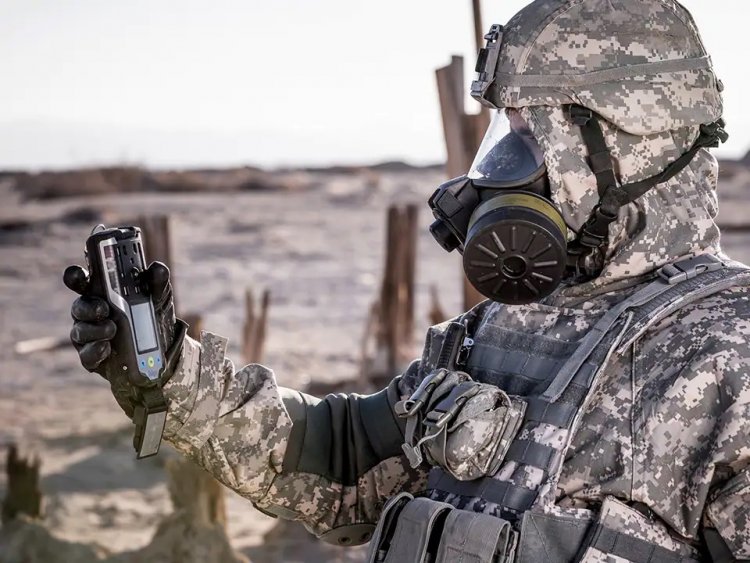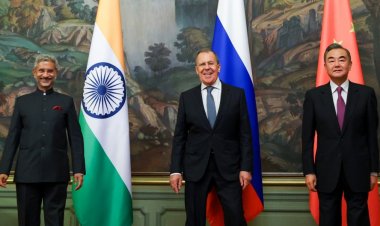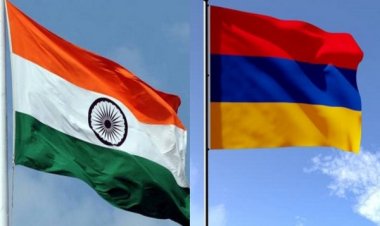Will Putin use CBRN in Russia- Ukraine War in the near Future?
The article discussed CBRN and how the war in Ukraine has increased the risk of a nuclear device being utilized in Ukraine. How big is the threat of it and what kind of nuclear weapon can be used?

Commentary
By Peder Foss
The war in Ukraine has increased the risk of a nuclear device being utilized in Ukraine. How big is the threat of it and what kind of nuclear weapon can be used? Nuclear weapons are divided into tactical nuclear weapons and strategic nuclear weapons. Tactical nuclear weapons are constructed to be used on the battlefield and yield between 1 kiloton to several 100 kilotons. The delivery systems are artillery rockets, howitzers, airplanes, and different kinds of missiles. The targets are often logistical hubs, military units, airbases, naval bases, headquarters, and other military targets. Strategical nuclear weapons yield a much bigger blast and are usually between 500 kilotons up to 10 megaton warheads. These weapons are usually delivered by ICBMs (Intercontinental Ballistic Missiles). These missiles are usually containing several warheads, thus, one missile can hit several targets. When a nuclear weapon detonates, it creates an Electromagnetic Pulse (EMP). The EMP destroys all electronic equipment within its range. The military electronic equipment is somewhat shielded from the effect of an EMP wave. There are non-nuclear EMP weapons in the military arsenal, but there are uncertainties about how efficient they are.
Nuclear weapons are political weapons used as a deterrence. During the Cold War, the USA and the Soviet Union were locked in a nuclear arms race. The arms race created a doctrine, which most likely prevented a war between the two superpowers. The doctrine was called the MAD-doctrine (Mutually Assured Destruction). There were several close calls during the Cold War. The most famous one was the Cuban Missile Crisis in the early 1960s and the Able Archer incident in the early 1980s. Nuclear weapons are integrated into the Russian military doctrine and in NATO's strategic concept. Russian President Vladimir Putin has threatened to use all means necessary to protect Russia. Does that mean he will use nuclear weapons? Probably not, even if the use of one tactical nuclear weapon will not escalate to a nuclear war between NATO and Russia, it is difficult and almost impossible to predict how the world would react to the use of nuclear weapons in Ukraine, North Korea, or if something goes wrong between India and Pakistan.
The next crucial aspect is The CBRN (Chemical, Biological, Radiological, Nuclear) weapons. This paper began with nuclear weapons, but let us discuss the other for a moment. Chemical weapons are usually divided into different categories. The nerve agents include Sarin, Tabun, Soman, F-type, VX, and Novichok. Sarin was used by the Aum Shinrikyo sect/cult in Japan, 1995-1996. Sarin has also been used during the Iran-Iraq war and the war in Syria. The other common chemical weapons are blister agents, which include the famous mustard gas. Iraq used this C-weapon against the Kurdish people in 1988. Mustard gas was developed during the First World War and it was used by both sides during the conflict. Another common and quite old chemical weapon is Chlorine gas. It was first used during the First World War and it seems it has been used in Syria quite recently.
Biological weapons have been used since the beginning of warfare. Poisoning waterholes was a common practice during wars. Another famous case was the siege of Caffa (1346) when victims of the plague were thrown into the city. The ports were open so the disease was spread to the Mediterranean. The plague is caused by the bacteria Yersinia Pestis and occurs naturally in the world. The disease plague can be cured by antibiotics if the infected person gets diagnosed quickly. Another infamous biological agent is Anthrax. It is caused by the bacteria Bacillus Anthracis. It is not a contagious disease, but it has been used shortly after the 9/11 terrorist attacks in the US when somebody sent Anthrax letters to officials. Another biological weapon is smallpox. It is caused by the variola virus and has caused a lot of suffering through the centuries. It is a contagious disease, and about three of the ten infected died of it. The disease is not naturally occurring any longer. The World Health Organization (WHO) launched a vaccination program to eradicate smallpox and it seems to have been successful. There are concerns about the possibility of the variola virus being used by terrorists and state actors.
The Ebola and the Marburg viruses have huge potential as biological weapons. Both Ebola and Marburg belong to the filoviruses and cause hemorrhaging fevers with a high mortality rate. Though there are six different kinds of the Ebola virus, only four of them cause diseases in humans. Ebola and Marburg viruses spread through direct contact with body fluids or objects contaminated with the viruses. South Africa was researching how to weaponize the Ebola virus (Project Coast) and it is easy to conclude if South Africa was doing it, maybe other countries were researching the filoviruses as well. The Aum Shinrikyo sect/cult tried to get the Ebola virus but failed. Biological warfare and bioterrorism are rare occurrences, mainly because the pathogens used as weapons are difficult to spread. Nature is much better to do this, as we see the world is slowly recovering from a pandemic. We have yet to see if we can learn from the COVID pandemic, but we have not learned a lot from previous pandemics and epidemics. I am concerned about the avian viruses (bird flu). These viruses have been able to be zoonotic, which means the pathogen can be transmitted from one species to another. The bird flu viruses have not caused a major outbreak among humans yet, but with the evolution of viruses, it is a potential risk for a major outbreak. Radiological weapons are any radioactive elements on the periodic table. These elements can be added to conventional explosive devices to contaminate an area for an extended period of time. R-weapons can also be spread through food and water. The latest incident involving R-weapons was the assassination of the former Russian agent Alexander Litvinenko in London. The weapon/radioactive element used in this case was Polonium-210.
Nuclear weapons are only usable as a deterrence, and if Vladimir Putin authorizes the use of one, it will most likely be a suicidal act. The political price to use chemical weapons is lower than using nuclear weapons. There is a greater risk for chemical weapons to be used in Ukraine. Chemical weapons were used in Syria and during the war between Iran and Iraq. Russia has used chemical weapons against a former Russian agent in Salisbury, UK, and against the Kremlin critic Alexey Navalny.
Are we closer to nuclear war or see the use of any of the other weapons mentioned in this paper? Yes, we are closer to it, but we are not there yet. The Russians know it will cause a severe response if they use a nuclear weapon in Ukraine. How NATO would react to the use of chemical weapons is not completely clear at the moment. In my opinion about the latter is; NATO does not intervene, but NATO countries will increase their support to Ukraine and provide the Ukrainians with more long-range weapon systems to allow them to hit targets on Russian soil.
If Russia uses a nuclear weapon and what some American retired generals have said about it, is rather concerning. The use of a nuclear weapon will trigger a NATO response and NATO will attack the Russian units based in Ukraine, Donbas, and Crimea. This will lead to a war between NATO and Russia, and nobody wants that. The means to end this war is to find an honorable way out for the Russian government, but that will not be easy.
Disclaimer: This paper is the author's individual scholastic contribution and does not necessarily reflect the organization's viewpoint.
























